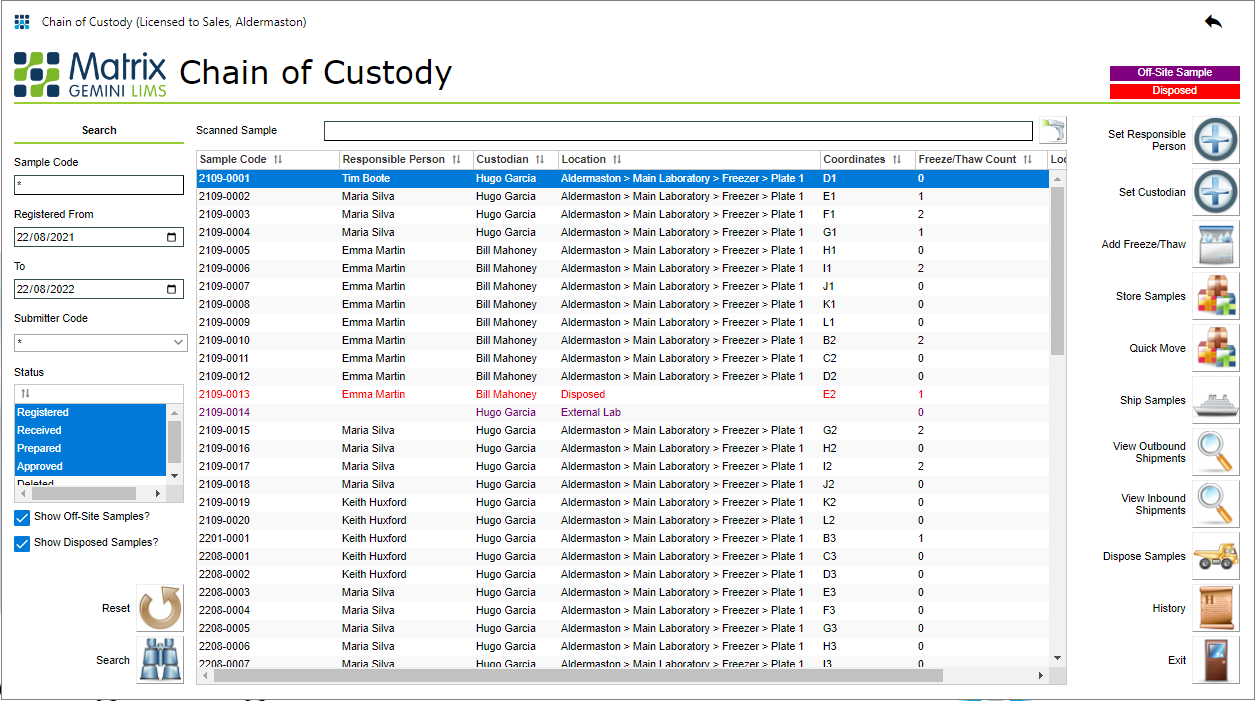Using LIMS Chain of Custody to Track Items and Ownership
Automatically recording the Chain of Custody (CoC) for an item is essential when it is necessary to track an item throughout its lifetime. A CoC will, for example record the location of an item, showing where it is now as well as where it has been. A comprehensive CoC, however, must record more than just the location history of an item; for example, it can be important to know who is, and who has been, responsible for an item during its lifetime. While it is obvious why a complete CoC is required by forensic laboratories dealing with criminal cases, it is also vital in a broad range of other laboratories. These include laboratories dealing with controlled substances and laboratories carrying out recreational and sporting drugs of abuse testing. Another typical area where maintaining a CoC on items is important is within Biobanks where it must be possible to quickly locate items, move them and track them when they are being used in studies.
Chain of Custody recording within a laboratory information management system (LIMS) allows you to quickly discover:
- Where the item currently is
- When it was put there
- Who put it there
- Where it has previously been
In addition, it can be important to record responsibility and custodianship. Within the laboratory it is common to record who is responsible for an individual sample (or item), as well as where it physically is at a specific time. For example, lab staff might take a sample out of the Biobank, taking personal responsibility for it while they perform various analytical tests before they return it to storage. Similarly, especially in Biobanks, custodians are often associated with samples or collections. A custodian has overall responsibility for the security, access to, and ethical use of samples under their control. To help manage and control issues of responsibility and custodianship a LIMS Chain of custody allows you to answer such questions as:
- Who is currently responsible for the item?
- When did they assume responsibility?
- Who previously had responsibility for the item?
- Who is the current custodian?
- When did they assume custodianship?
It is also important to track the quantity of each item in storage and track each individual sub-item. For example, in a biobank only a sub-sample of existing items might be taken out of storage for use in a research program. Both the remaining items and the sub-samples need to be tracked until, for example, they are disposed of or transferred to another organization.
In the situation where items are removed from controlled storage it is also possible for the responsible person to mark the items as under their personal responsibility and not in a specific location. If these items are subsequently returned to storage, they can be reassigned to specific locations, such as a specific container within a freezer.
The Matrix Gemini LIMS Chain of Custody (CoC) module is designed to perform these tasks with ease. The CoC module may be added to any Matrix solution. It allows the responsible person, custodian, and location of every sample to be recorded

A search function on the left-hand side of the CoC screen enables samples to be quickly selected using various search criteria. It is simple to configure these criteria to meet the needs of individual organizations using the built-in Matrix configuration tools. Alternatively barcode labelled samples can be scanned to find the relevant entry in the system. Selected entries can then have the required CoC action applied to them.
In addition to the common actions described above other actions can be applied to items such as:
- Adding a freeze thaw cycle. This allows a count of the number of times items have been subject to freezing and thawing to be maintained
- Shipping outside the organization. Records the shipment of items to outside organizations and then receiving them back in part or in total
- Disposing of items. Allows the disposal of items to be recorded
When a CoC action is applied to an item or items it creates an event associated with each item. These events form the CoC record for each item. The CoC records for items can be displayed and reported on in chronological order providing a complete profile of what happened through the entire life of each item. The entire log is read only, ensuring the audit history cannot be altered by users.
















